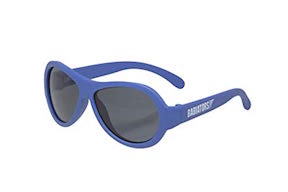Safe Play in the Summer Sun
by Jen Patterson

We’re lucky in the PNW to have some of the best options to get outside — beach, mountains, and forests all within a short drive of Seattle city center. While we all love our Seattle summers (even though they’re short-lived), the last thing we want to stress about is how to keep our kids safe in the sun. Here are some answers to commonly asked questions about sunscreen, sun safety, and some of our favorite sun-safe gear. We also want to let you know that BabyBum (baby safe, reef safe) sunscreen has arrived to our shop and can be included in your next delivery saving you a trip to the store.
Where to Play Outside in Summer
First things first — the best way to start a fun summer day is deciding where to go. Parent Map has an extensive list of where to Stay Cool in a Seattle-Area Heat Wave that includes a list of spray parks, wading pools, outdoor pools, and beach adventures.
You can also check out the Seattle Parks and Rec site for an updated list of public spray parks and wading pools. They also regularly post updates about openings and closures to their Facebook page.
What You Need to Know About Sunscreen
Should babies wear sunscreen before 6 months?
According to the Skin Cancer Foundation, the outermost layer of infant skin is thinner than normal for the first several months of life, which means chemicals can more easily penetrate the skin — this is why infants are more prone to rashes and skin reactions. Also, because their skin is thin it’s more likely that the chemicals will be absorbed into their bloodstream. While there’s no black and white answer, it’s best practice to keep babies under 6 months in the shade and to use mineral/physical formulated sunscreens for kids of all age. Perform a test on a small patch of skin to check for a reaction, and use hats and clothing to totally block the sun when possible.
How important is a high SPF?
There’s not a lot of difference between SPFs after a certain point — SPF 30 blocks 97% of UVB rays, SPF 50 blocks 98% of UVB rays, and SPF 100 blocks 99% of UVB rays. So for most people, SPF 30 gets the job done when you’re not spending hours in direct sunlight, but with kids or anyone else sensitive to the sun, it never hurts to get a little extra protection with a higher SPF.
Which sunscreen ingredients should kids and babies avoid?
For kids older than 6 months, it’s always better to use sunscreen than not if you’re spending time in the sun and don’t have shade available. However, since younger skin is more sensitive to irritation from chemicals it’s best to search for products that don’t contain the following common ingredients: oxybenzone, avobenzone, octisalate, octocrylene, homosalate and octinoxate. Mineral sunscreen ingredients, which are less likely to penetrate the skin’s barrier include: zinc oxide and titanium dioxide.
It’s important to note that not only are oxybenzone and octinoaxate harsh on skin, these two ingredients contribute to coral reef bleaching, which increases the reef’s mortality levels. Look for a “Reef Friendly” label on products.
Not so fun fact: Kid-friendly and environmentally friendly sunscreen is usually a bit more expensive than chemical-based formulas. It’s also more difficult to rub in on little faces because it’s less absorbent. Your snaps from the beach might be a little less Instagram-able with sunscreen smeared on faces, but remember that it’s doing a better job protecting your kids and the planet.
What else do you need to know about sunscreen?
No matter which kind of sunscreen or level of SPF you use, keep these tips in mind to make staying safe in the sun a little easier:
- Leave specific directions for caregivers on which sunscreen to use, when to put it on, and which clothes to wear for outside play.
- Sun blocks sticks are a travel-friendly option for stashing in purses, diaper bags, and the car.
- Sun gear like hats and sunglasses always tend to get lost, so it’s a good idea to have a couple extras in your bag.
Having a great sunscreen is important, but an even more reliable option is choosing clothing that fully protects their sensitive skin from this sun. We love this option because there’s no chance of forgetting to reapply, and options like hats and rash guards provide coverage even if kids are getting wet and toweling off. Fortunately, there’s a lot of great gear available that can help kids and babies stay safe in the sun. Here are some of our favorites:
Ruffle Butts and Rugged Butts swim gear come in a number of adorable long sleeve prints and styles but the best part is that they’re made from UPF 50+ fabric.

Patagonia Sun Hat. These reversible and comfortable hats from Patagonia provide 50+ UPF sun protection and are Fair Trade Certified sewn.

Babiators Sunglasses. We love Babiators because the manufacturer provides a 1 year warranty against loss or breakage. They are lightweight and durable and provide 100% UVA and UVB protection.





